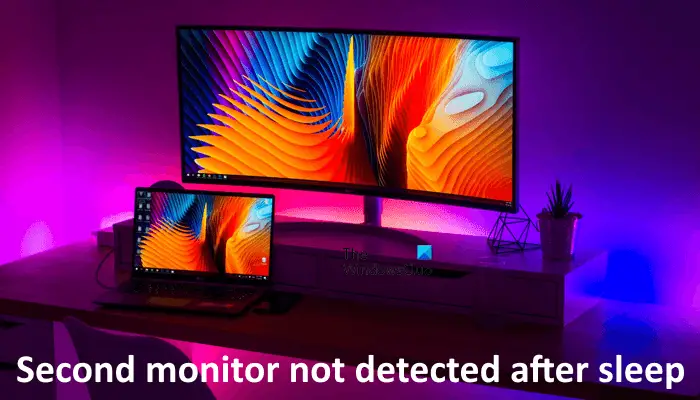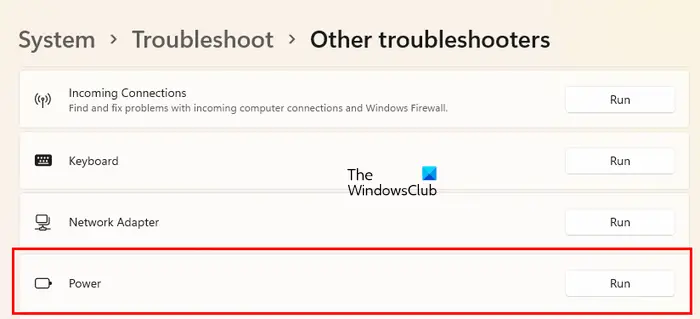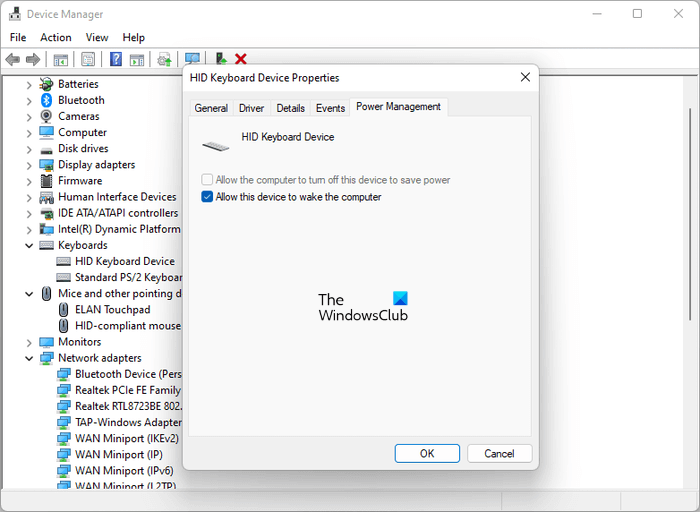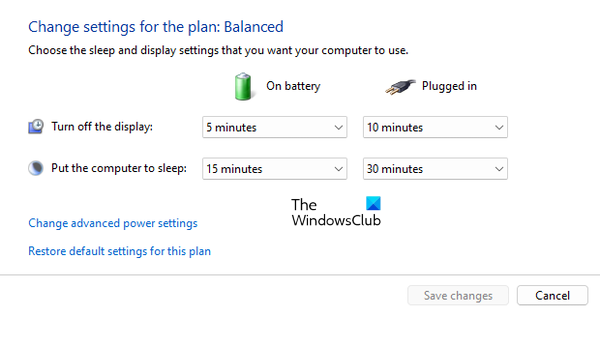You can set up multiple monitors on Windows. This is a great feature, but sometimes problems occur, like Windows cannot detect the second monitor after waking up from Sleep mode. Some users experienced this problem and reported that the second monitor displays nothing except the No signal message after sleep. This article lists some effective solutions if second monitor is not detected after Sleep.

There are many causes of this issue. Incorrect monitor settings also prevent the second monitor from turning on after sleep, like the Deep Sleep mode. Apart from that, incorrect power settings on Windows are also responsible for the same issue. Moreover, the problem may also be associated with your graphics card and monitor drivers.
Second monitor not detected after Sleep on Windows PC
If the second monitor is not detected after sleep, first of all, check the cable connecting your second monitor to your system. Unplug the cable and plug it in again. See if it helps. Some users managed to resolve the issue by changing the display setting. Press the Win + P keys and select the Duplicate option. This is a temporary solution, as you have to do this every time after waking your computer from sleep.
Use the solutions provided below to resolve this problem permanently:
- Restart your graphics card driver
- Run the Power Troubleshooter
- See if there are any warning messages in the Device Manager
- Uninstall and reinstall your graphics card driver
- Disable your monitor Deep Sleep mode (if available)
- Change Power Management Settings
- Restore default settings for your Power Plan
Let’s see all these fixes in detail.
1] Restart your graphics card driver
The simplest way to resolve such types of display-related problems is to restart the graphics card driver. Sometimes, this happens due to the graphics card glitch which can be resolved if you restart your graphics card driver. Press the Ctrl + Shift + Win + B keys together. See if the monitor wakes up or not after doing this.
2] Run the Power Troubleshooter

One of the causes of this problem is the power issues on your system. Run the Power Troubleshooter and see if it helps. You will find it in Windows 11/10 Settings.
3] See if there are any warning messages in the Device Manager
Now, your next step is to check for driver issues. See if your monitor driver is displaying the warning message. Go through the following instructions.
- Open the Device Manager.
- Expand the Monitors branch.
- If your monitor driver is showing the yellow warning sign, uninstall it. To do so, right-click on it and select Uninstall device.
- Now, restart your computer.
Windows will automatically detect the hardware changes and install the missing driver on restart. If the Device Manager shows greyed-out monitor drivers, remove them also and then restart your computer.
4] Uninstall and reinstall your graphics card driver
We also suggest you uninstall and reinstall your graphics card driver. First, download the latest version of your graphics card driver from the manufacturer’s website. Now, open the Device Manager and uninstall your graphics card driver. After that, run the installer file to install the GPU driver.
5] Disable your monitor Deep Sleep mode (if available)
Open your Monitor settings by pressing the required buttons on your monitor. See if there is a mode named Deep Sleep. If yes, disable it. This should help.
6] Change Power Management Settings
Incorrect Power Management settings are also responsible for this issue. According to the feedback, changing the Power Management settings for the keyboard, mouse, network adapter, and USB Root Hub can help. Go through the following instructions:

- Open the Device Manager.
- Open the properties of the following drivers one by one:
- Keyboard
- Mouse
- Network adapter
- USB Root Hub
- Go to the Power Management tab.
- Check the Allow the device to wake the computer option.
7] Restore default settings for your Power Plan
As explained earlier, incorrect power settings are one of the causes of this problem. If you have tried all the solutions explained above but the problem is not solved, restore your Power Plan settings to default. Follow the steps written below:

- Open the Control Panel.
- Go to “Hardware and Sound > Power Options.”
- Click Choose when to turn off the display link on the left side.
- Click Restore default settings for this plan.
- Click Yes in the confirmation box.
How to connect 2 monitors to PC?
To set up dual monitors on your PC, you need HDMI cables. The old monitors are only compatible with VGA cables. Hence, if you have an old monitor, you need to purchase an HDMI-to-VGA converter. After connecting your monitors to your PC, you can configure them in Windows 11/10 Settings.
I hope this helps.
Read next: Second monitor not displaying after Windows Update.
Leave a Reply